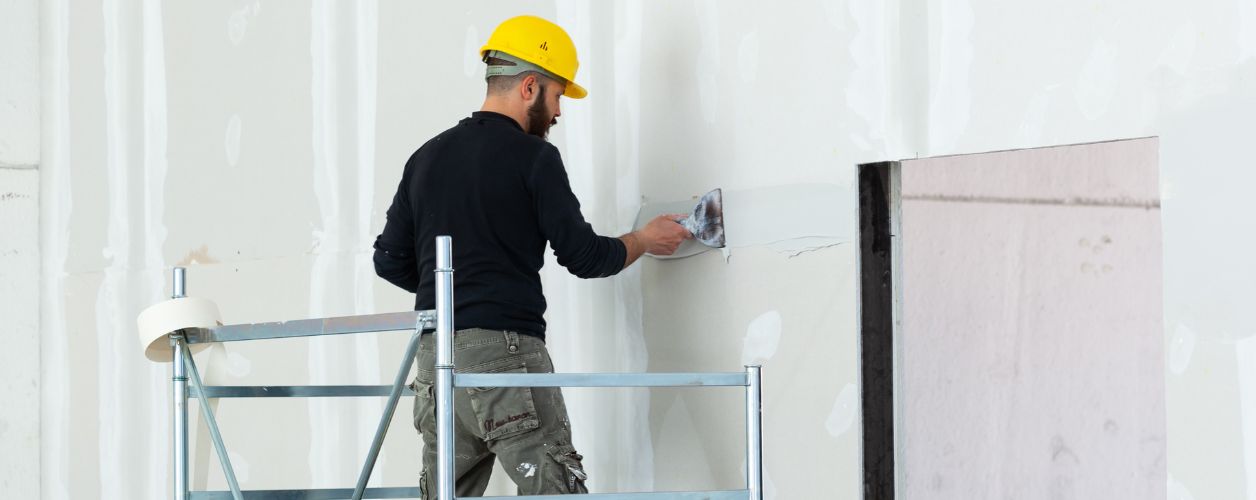Get free quotes within minutes
Lime Plaster vs Gypsum Plaster: Which Is Better?

Table Of Contents
- Introduction
- What is Lime Plaster?
- What is Gypsum Plaster?
- Benefits of Lime Plaster Over Gypsum
- When Gypsum Plaster Makes More Sense
- Why Building Age Affects Plaster Choice
- Detailed Comparison of Gypsum and Lime Plaster
- Why Lime Plaster is Best for Old Homes
- How to Make a Choice Between Lime and Gypsum Plaster
- Conclusion
Compare lime vs gypsum plaster to find the best fit for your walls
Increasingly, homeowners nowadays seek natural ways to build or rebuild their homes. One of the materials experiencing renewed popularity is lime plaster. It has been used since ancient times in construction. Nowadays, people appreciate it because it allows walls to breathe and because of its stunning textured finish.
But most homes to this day still use gypsum plaster. It is easy to apply, smooth finish, and is readily available. Let's find out more in this guide, and help you choose between lime and gypsum plaster for your home.
What is Lime Plaster?
Lime plaster is a mix of slaked lime, sand, and water. It has been in constant use ever since the time man started building. You can still see it on Roman walls, medieval buildings, and old homes. It is a natural product. It is appropriate for older homes and green projects.
There are two forms of lime plaster. The first is hydraulic lime. It hardens when combined with water and is best suited for exterior walls or damp spaces. The second is non-hydraulic lime. It hardens slowly by drawing in carbon dioxide. Lime plaster is suited for interiors and dry climatic conditions.
Lime plaster, as described, is strong, airy, and elastic in that it adheres properly to the surface and has a setting time commensurate with nature. It also has some sort of aesthetic appeal that people love most. It also accommodates healthier indoor air.
What is Gypsum Plaster?
Gypsum plaster is ever more common for use in homes. It comes from the mineral gypsum. The plaster is also commonly referred to as drywall or plaster of Paris. Gypsum plaster is known to set quickly, offering a modern and smooth surface.
Gypsum plaster is favored by builders in construction. It is less expensive, simpler to work with, and readily available in most hardware stores. It performs adequately in dry indoor environments and fast-track projects.
While not as breathable as lime, it gets the job done in regular construction. It is the choice of most homeowners for a clean, quick finish.
Benefits of Lime Plaster Over Gypsum
Lime plaster has numerous advantages that make it a premium option for certain homes. These advantages extend beyond aesthetics. They can enhance health, energy consumption, and long-term durability.
- Lime plaster enables walls to breathe. Water permeates easily, which avoids dampness and mold. It cleans the indoor environment. It also offers therapeutic effects, especially for asthmatic and allergic persons.
- The high alkalinity accounts for lime's great resistance to mold and mildew. Bacteria cannot live on lime walls. This provides an additional level of protection within your dwelling.
- Lime plaster is also far more robust. It will last for decades, even centuries. It does not crack like gypsum. This is ideal for historic buildings that move or settle over time.
- It is also kinder to the environment. Lime plaster works with natural products. It carries a low carbon profile. It also regulates temperature and humidity. That makes your house more efficient.
- Lime plaster also appears distinct from other new materials. It provides texture and personality. You can shape it or have it colored to your taste. It gives every room an old-fashioned, handmade impression.
When Gypsum Plaster Makes More Sense
Despite all the advantages of lime plaster, there are occasions when gypsum plaster is superior.
- If money is tight, gypsum is the cheaper option. Lime is quite expensive and requires specialized kinds of applications, which add to its running costs.
- If you want something done faster, you go for gypsum lime. It cures faster and needs less time to dry. This accelerates construction.
- Gypsum also provides you with an incredibly smooth finish. If you need clean lines or are going to paint your walls, gypsum plaster will provide you with the desired effect.
- Gypsum is readily available. Most hardware stores carry it. You won't have to special-order materials or bring in specialists.
- If you are in a dry environment and don't have mold problems, you might not require the breathability of lime. Under such circumstances, gypsum will suffice.
Why Building Age Affects Plaster Choice
The age of your house plays an important part in choosing between lime and gypsum plaster. Old buildings contain solid brick or stone walls. They are constructed to breathe. They allow moisture to pass through and evaporate. This keeps them healthy and dry.
If you apply non-breathable substances such as gypsum to old walls, moisture will become trapped. This causes damp patches, mold, or structural damage.
New houses have cavity walls and sealed materials. They are designed to exclude water. Such houses don't require breathable plaster to the same extent as older houses.
So, if your house is old, lime plaster will typically be the better option. It is consistent with the materials and techniques of the original construction.
Detailed Comparison of Gypsum and Lime Plaster
Let's examine closely the most important characteristics of both materials. This enables you to match the plaster to your house's needs.
- Gypsum plaster is easy to use. It dries quickly, which enables you to finish the job faster. It is ideal for new buildings, refurbishments, or rooms that require a smooth look. It is also fire-resistant, which brings in security.
- But gypsum plaster does not breathe. That can be a disadvantage in older houses. Water can accumulate behind it. Eventually, it can crack if your house moves or settles. It doesn't play nicely with older materials such as brick or stone.
- Lime plaster is very breathable. It dries walls by allowing moisture to escape. This is necessary in old buildings. It also accommodates movement. If your walls move, lime plaster flexes slightly without cracking.
- Lime plaster is also environmentally friendly. It employs natural materials. It does not damage the environment. Lime plaster kills bacteria and mold, which promotes clean indoor air.
- It has a homemade appearance. It's slightly rough finish, though, gives it warmth and personality. You can achieve decorative effects with it as well.
- There are disadvantages to Lime, however. It is slower to dry. You will need to hire an expert to put it on. It is also more expensive. But the advantages are much longer-lasting.
Why Lime Plaster is Best for Old Homes
- If you reside in an older building, lime plaster is usually the ideal option. It allows your walls to breathe, keeping moisture at bay. This averts dampness, rot, and health concerns.
- Lime plaster also copes with movement more effectively. Older homes creak a little over time. Lime flexes with the building. It doesn't crack as gypsum does.
- It matches the traditional materials in older houses. Stone, brick, and lime mortar all work well with lime plaster. It keeps your home looking authentic.
- Lime also lasts longer. It may take longer to apply, but once it's on, it can stay for generations. You’ll need fewer repairs and less maintenance.
- It will assist your indoor air as well. You'll experience less mold and improved humidity control. This may enhance your health and comfort.
How to Make a Choice Between Lime and Gypsum Plaster
Still confused about which one to choose? Put them side by side to aid your decision.
- Lime plaster is more expensive. Gypsum is less expensive. But lime pays for itself in the long run with reduced plaster repairs and improved insulation.
- Lime needs skilled labor. It is harder to apply. Gypsum is easy to use and faster to finish.
- Gypsum dries fast. Lime takes more time. If your timeline is short, gypsum may work better.
- Lime is stronger and lasts longer. Gypsum is more prone to damage over time.
- Lime breathes. Gypsum traps moisture.
- Lime is eco-friendly. Gypsum is less so.
- Lime looks textured and handmade. Gypsum gives a smooth, modern surface.
Conclusion
Selecting lime or gypsum plaster is not purely a matter of expense. Consider your house, its age, and what you are trying to accomplish.
For an older home, lime plaster is the wiser decision. It makes your walls healthy and your air fresh. It is also considered part of the house's history.
If you own a new home or must complete the job quickly, gypsum plaster could be the solution. It's smooth, quick, and inexpensive.
Consider the investment over the long term. Although lime is more expensive now, it will shield your house for years to come.
Do your homework, consult with experts, and consider your home's needs. When you use the proper plaster on the proper home, you achieve long-lasting results, improved air quality, and a more handsome finish.






